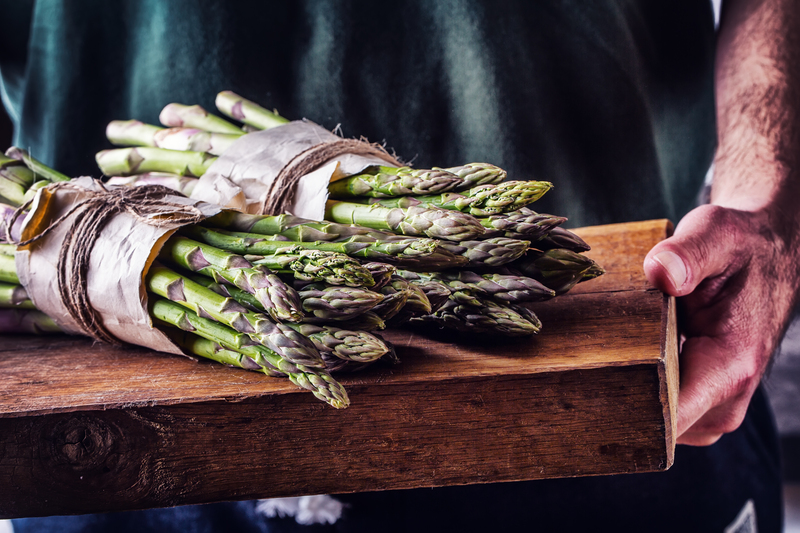The Ultimate Guide to Orchid Success
Posted on 26/05/2025
The Ultimate Guide to Orchid Success
If you've ever admired the graceful blooms of orchids and wondered how to care for these exotic beauties, you're in the right place! Orchids are renowned for their mesmerising flowers and unique appearance, but many believe they are too difficult to keep. The truth is, orchid success isn't a matter of luck -- it's about understanding their needs and learning the art of nurturing them.
This comprehensive orchid guide will walk you through everything you need to know, from choosing the right orchid species to troubleshooting common problems and achieving those stunning blooms year after year. Whether you're a beginner or a seasoned grower, this guide will help you master the art of growing orchids at home.
Why Choose Orchids?
Orchids belong to the Orchidaceae family, which is one of the largest and most diverse plant families on the planet. With over 25,000 species, orchids come in a range of sizes, colours, and growth habits. Their elegant form, glamorous blooms, and often intoxicating fragrance make them a favourite among indoor plant enthusiasts.
- Long-Lasting Blooms: Many species flower for months at a time.
- Unique Shapes & Patterns: No two orchids are quite alike.
- Air-Purifying Qualities: Some orchids help cleanse indoor air.
- Compact Growth: Many varieties thrive in small pots, making them suitable for apartments.
- Symbol of Beauty: Orchids represent luxury, refinement, and rare beauty.

Understanding Orchid Varieties
Knowing your orchid is the first step towards thriving orchid success. Different genera have their own specific requirements and growth characteristics.
Popular Orchid Types for Beginners
- Phalaenopsis (Moth Orchid): Reliable, easy-care, and blooms last several months.
- Cattleya: Known for their large, fragrant flowers and vibrant colours.
- Dendrobium: Diverse genus with showy spikes and manageable care needs.
- Oncidium (Dancing Lady): Features abundant, delicate flowers and attractive foliage.
- Paphiopedilum (Slipper Orchid): Unusual pouch-shaped blooms; prefers lower light.
Specialty Orchids
As you gain experience in growing orchids successfully, you may wish to explore:
- Vanda: Water-loving, stunning flowers in brilliant colours.
- Miltoniopsis: "Pansy orchids" with fragrant, flat-faced blooms.
- Cymbidium: Tall spikes with multiple flowers, often used in floral arrangements.
Getting Started: The Right Environment for Orchids
Orchids are epiphytes in the wild -- which means they grow on trees, drawing moisture from the air and decaying matter. To achieve orchid growing success at home, mimic these conditions as closely as possible.
Light Requirements
- Phalaenopsis: Bright, indirect light (east or west window is ideal).
- Cattleya and Oncidium: More light, such as a south-facing window with sheer curtain.
- Paphiopedilum: Tolerates lower light; avoid direct sun.
Tip: Orchid leaves should be a light, grassy green. Dark leaves may signal too little light; yellowish leaves may mean too much.
Temperature & Humidity
- Optimal Day Range: 65-80?F (18-27?C)
- Night Range: 60-65?F (16-18?C)
- Humidity: 40-60% is best. Increase humidity with trays, humidifiers, or groupings.
Air Circulation
Ensure there's gentle air movement around your orchids, which helps prevent fungal and bacterial diseases while also mimicking their natural environment. Open windows, a ceiling fan, or a small desk fan on low can do wonders.
Orchid Potting Mix & Containers
A key factor in orchid care success is choosing the right medium. Standard potting soil holds too much water and will suffocate orchid roots. Instead, use:
- Bark Chips: Classic, airy, and allows drainage.
- Sphagnum Moss: Retains moisture for species that prefer it.
- Coconut Husk, Perlite, Charcoal: Often combined for customized mixes.
Orchid Pots
Orchid roots like to breathe and see the light, mimicking their natural habit of growing on tree bark. Use clear plastic pots for beginners (to monitor root health) or ceramic pots with plenty of drainage holes. Never let orchids sit in standing water!
The Art of Watering Orchids
Overwatering is the top cause of orchid failure. With their thick, succulent roots, orchids are designed to absorb occasional showers in nature and dry out in between. Here's how to get it right:
How to Water Orchids
- Stick your finger in the medium -- if it feels dry about an inch down, it's time to water.
- Water by soaking the pot thoroughly, letting water drain out completely.
- Never let pots sit in excess water.
Frequency: Most orchids need water once a week; some (like slipper orchids) prefer slightly more frequent watering, especially in dry homes. Adjust seasonally: less in winter, more in active growth or drier weather.
Tip: Clear pots make it easy to see if roots are healthy (bright green when wet, silvery when dry).
Feeding Orchids for Blooms and Health
To achieve spectacular orchid flowers, fertilize lightly and regularly. Remember the phrase, "weakly, weekly."
Choosing Orchid Fertilizer
- Use a balanced orchid fertilizer (such as 20-20-20) or one formulated specifically for orchids.
- Dilute to half or quarter strength.
- Fertilize every 2-4 weeks during growth; less often during rest periods.
Flush pots with plain water monthly to prevent salt build-up.
When to Fertilize
- Active Growth: Fertilize more often as new leaves, roots, or buds appear.
- Dormancy: Reduce feeding when growth slows.
Repotting Orchids: When & How
Orchids benefit from fresh potting mix every couple of years. Repot:
- When roots outgrow the pot or crawl out the top/bottom.
- If the medium breaks down or becomes soggy.
- After flowering (never during a bloom, if possible).
Steps to Repot an Orchid
- Gently remove the orchid from the pot.
- Trim away any dead roots (mushy, black, or brown).
- Sterilize your scissors beforehand.
- Place in fresh medium. Position the plant so the base sits at the top of the medium.
- Water lightly and resume normal care.
Tip: Don't worry if your orchid looks a little stressed after repotting; blooms may pause until it's re-established.
Orchid Success: Encouraging Blooms
The ultimate joy of orchid growing is a spectacular flower spike. To coax your orchids into flowering again and again, consider the following:
Key Blooming Factors
- Day/Night Temperature Drops: Many orchids need a 10?F (5?C) drop in temperature at night for a few weeks in autumn.
- Optimal Light: Ensure the plant is getting enough indirect brightness.
- Fertilization: Use a bloom-booster fertilizer high in phosphorus as spikes develop.
- Healthy Roots: Thriving roots lead to strong blooms.
Post-Bloom Orchid Care
Once flowers fade, cut back the flower spike just above a node (for Phalaenopsis) or all the way down (for others). Keep caring for the plant as usual, and many will rebloom in several months!
Troubleshooting Common Orchid Problems
Every grower faces setbacks. Here's how to solve the most common orchid issues:
Yellow Leaves
- Overwatering: Check root health and drainage.
- Low Light: Move to a brighter location.
- Old Age: Occasional yellow lower leaf is normal.
Mushy or Black Roots
- Root Rot: Almost always from excessive moisture. Repot and trim affected roots.
Not Flowering
- Insufficient Light or No Temp Drop: Move to a brighter spot and try a 2-week temperature drop at night.
- Poor Nutrition: Fertilize regularly.
Pests
Keep an eye out for:
- Mealybugs: Cottony white pests. Remove with isopropyl alcohol.
- Spider Mites: Fine webbing, stippled leaves. Wipe leaves and increase humidity.
- Scale Insects: Hard brown bumps; scrape off and treat with horticultural oil.
Advanced Orchid Care: Tips & Tricks
Once you've mastered the basics, challenge yourself with these extra strategies for guaranteed orchid flourishing:
- Mounting Orchids: Attach smaller species to cork bark or wood, mimicking nature.
- Seasonal Rest: Some orchids (like Dendrobiums) benefit from a drier, cooler period in winter.
- Orchid Shows: Join a local society or club for inspiration and advice from fellow growers.
- Propagation: Advanced growers can divide orchids or try growing from keikis (baby plants).
Creating an Orchid Display
Group orchids by species or season for a stunning visual impact. Use decorative pots or baskets, and layer with ferns or moss for an exotic, tropical feel. Rotate plants to ensure even light and prevent leaning.

Frequently Asked Questions About Orchid Success
- How often do orchids flower?
Most Phalaenopsis bloom once a year, though with good care, they can rebloom several times. Other orchids, like Dendrobium and Oncidium, may produce multiple flower spikes in a year. - Should I mist my orchids?
While misting can boost humidity, it's better to provide overall humidity (with trays or humidifiers) to avoid disease. - Can orchids grow outdoors?
Many can grow outside in warm, frost-free climates. Shade and protection from harsh rain are key. - Can I use ice cubes for watering?
It's better to water thoroughly; ice cubes can shock roots and don't provide enough moisture for most species.
Conclusion: Your Journey to Orchid Mastery
The secret to orchid success lies in understanding your plant's natural habitat and reproducing those conditions at home. Remember to be patient! Orchids reward attentive care with unforgettable flowers and a long, fulfilling growing partnership. With this guide as your reference, you're well on your way to becoming an orchid expert and enjoying years of lush, exotic beauty in your living space.
Happy orchid growing!

